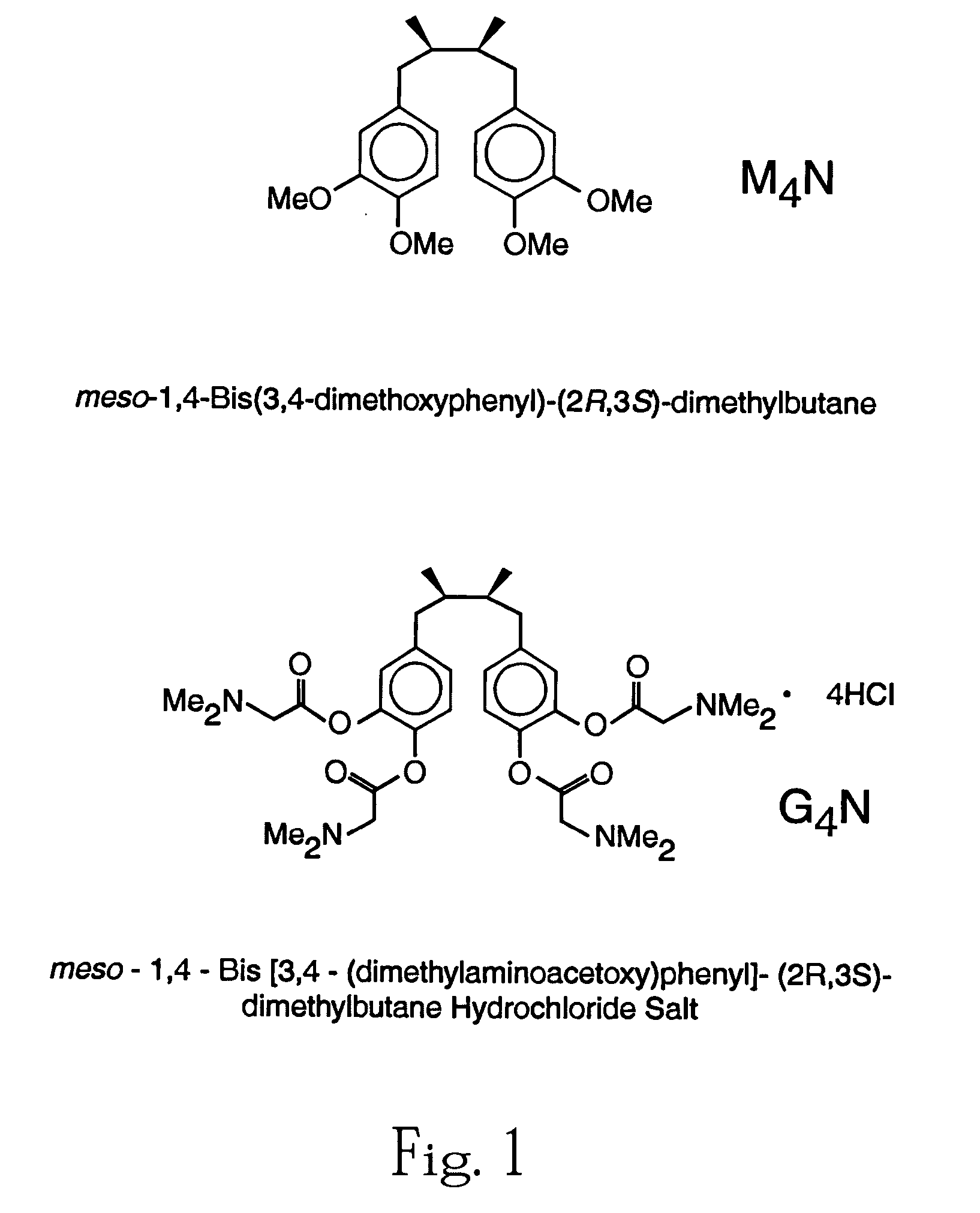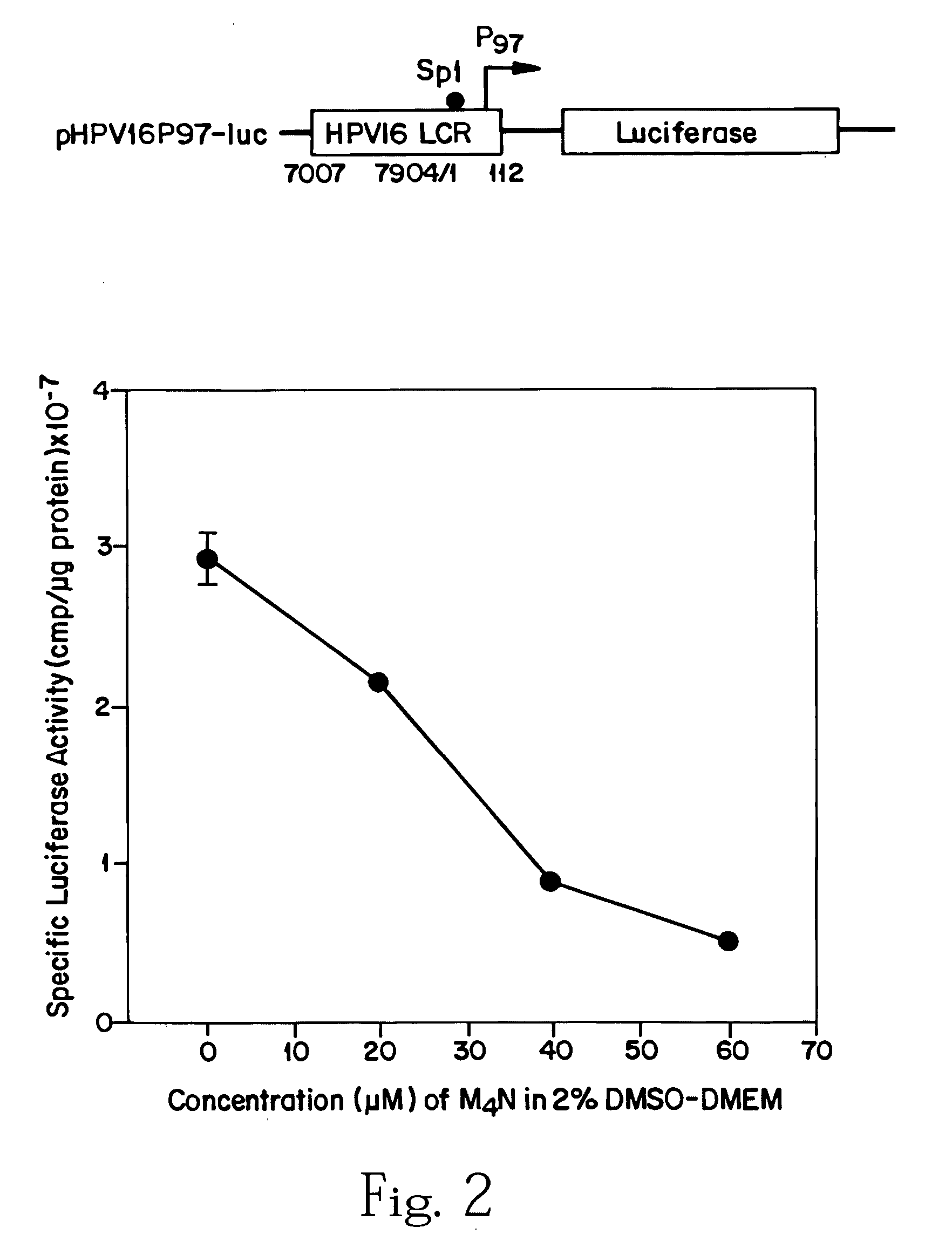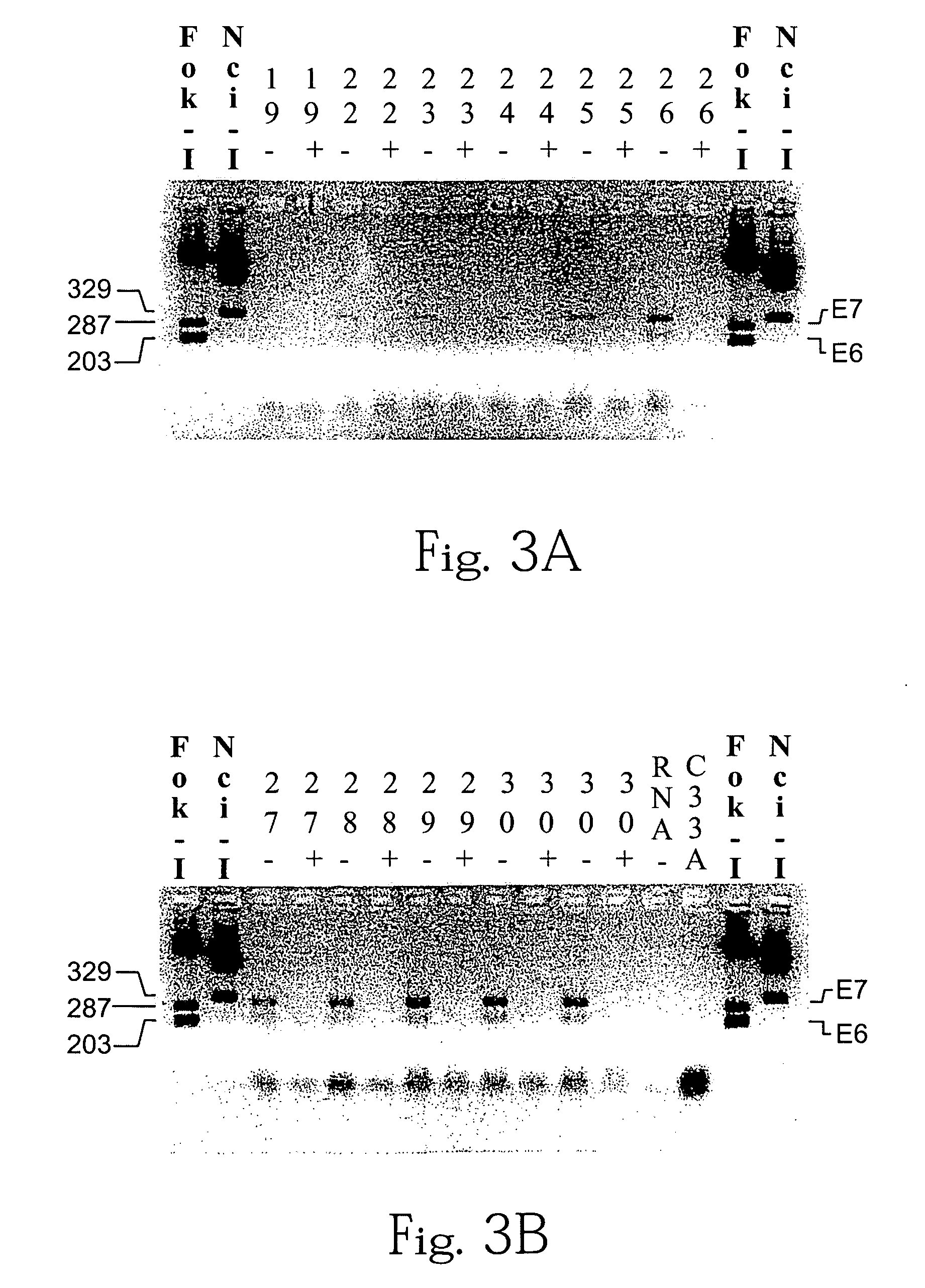Nordihydroguaiartic derivatives for use in treatment of tumors
a technology of nordihydroguaiaretic acid and derivatives, which is applied in the field of nordihydroguaiaretic acid derivatives, can solve the problems of laborious and costly separation and purification of plant lignans, and sub>4/sub>n certainly limits its use to the lowest effective concentration
- Summary
- Abstract
- Description
- Claims
- Application Information
AI Technical Summary
Benefits of technology
Problems solved by technology
Method used
Image
Examples
example 1
Effect of M4N and several other NDGA derivatives of SP1-regulated HPV E6 / E7 promoter activity.
[0058] The effect of M4N and several other NDGA derivatives of SP1-regulated HPV E6 / E7 promoter activity was examined using luciferase as a reporter. The assay depends upon DNA transfection of the HPV16 LCR (P97 promoter) fused to the luciferase reporter gene into C33A cells by calcium phosphate methods. C33A is a cervical tumor cell line (ATCC accession no. HTB-31) that does not contain any integrated HPV DNA, but has transcription factors necessary for a robust expression of the HPV early gene promoter. One day following DNA transfection various drug concentrations dissolved with the help of dimethyl sulfoxide (DMSO) were added to the cells. Thirty hours after drug treatment (so that the assay is complete within the standard forty-eight hours for transient transfection experiments), the cells were lysed and specific luciferase activity was determined (Luciferase Assay Systems, Promega, ...
example 2
Inhibition of E6 / E7 mRNA Synthesis Following M4N Treatment
[0060] Inhibition of E6 / E7 mRNA synthesis following M4N treatment was measured by RT-PCR in cervical cell line C3. Relative RT-PCR was performed with quantities of total cellular RNA standardized to the cell numbers counted. The RT-PCR product was analyzed on a 2% agarose gel. The results are shown in FIG. 3. The RT-PCR results indicated that the amplified cDNAs of the expected size for E7 (321 bp) and E6 (204 bp) were detected in the DMSO treated cells as early as cycle 22 of amplification. These same products were barely detectable in the drug treated RNA extracts following 30 cycles of amplification. No amplified products were detected for the no template PCR control or from total RNA extracts of the HPV16-negative C33a cell line.
example 3
Inhibition of Cervical C3 Cell Growth by M4N Treatment
[0061] HPV-16 transformed immortal mouse epithelial cells (C3 cells) were plated at a density of 105 cells per vial. After 24 hours, ½ of the vials were given growth media containing 40 μMM4N dissolved in 1% DMSO while the other half were given growth media containing only 1% DMSO. The results are shown in FIG. 4A. Within 24 hrs a difference in cell morphology between drug treated and control C3 cells was observed. The growth and division of the drug treated cells was markedly reduced in comparison to the untreated control, while the fraction of viable cells compared to the total cell count remained constant for both drug treated and DMSO only control cells. This indicates that M4N dramatically reduces cell division.
[0062] The effect on C3 growth following removal of M4N from the medium was also examined. C3 cells were plated at a density of 104 cells per vial. At time=0, ⅔ of the vials were given growth media supplemented wit...
PUM
| Property | Measurement | Unit |
|---|---|---|
| concentration | aaaaa | aaaaa |
| concentration | aaaaa | aaaaa |
| weight | aaaaa | aaaaa |
Abstract
Description
Claims
Application Information
 Login to View More
Login to View More - R&D
- Intellectual Property
- Life Sciences
- Materials
- Tech Scout
- Unparalleled Data Quality
- Higher Quality Content
- 60% Fewer Hallucinations
Browse by: Latest US Patents, China's latest patents, Technical Efficacy Thesaurus, Application Domain, Technology Topic, Popular Technical Reports.
© 2025 PatSnap. All rights reserved.Legal|Privacy policy|Modern Slavery Act Transparency Statement|Sitemap|About US| Contact US: help@patsnap.com



